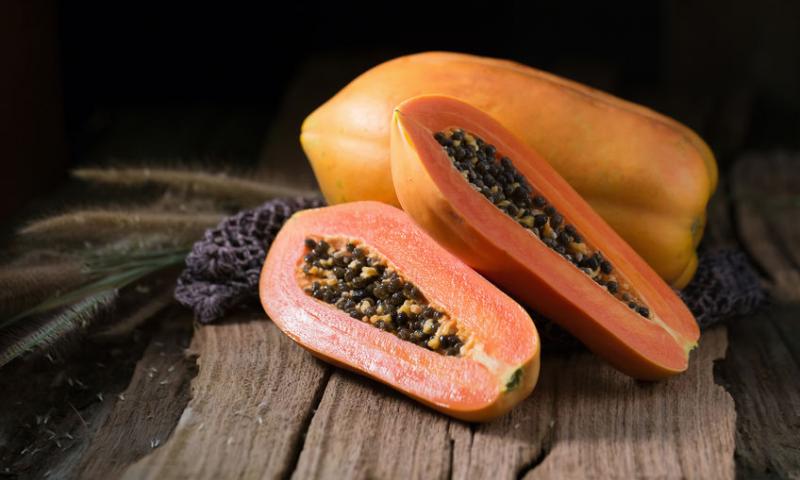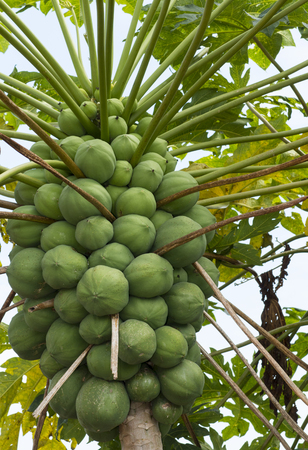 />
/>
LATIN NAME: Carica papaya
FAMILY: Caricaceae
GENUS: Carica
COMMON NAMES: papaya, papaw, or pawpaw
ORIGIN: is native to the tropics of the Americas (Mexico and northern South America)
DISTRIBUTION AREA: is naturalized throughout tropical and subtropical regions of the world
BOTANICAL INFORMATION: Papaya is a low, slender palm-like tree with a thin, branchless trunk of 3-10 m high. The leaves are large, 50-70 cm in diameter, finger-cut, on long petioles. Flowers develop in the axils of the leaves, turning into large fruits, 10-30 cm in diameter and 15-45 cm in length. The ripened fruit is soft and has a color from amber to yellow. All parts of the plant contain milky juice.
CHEMICAL COMPOSITION
COMPOSITION
Papaya contains proteins, carbohydrates, fiber, glucose and fructose, organic acids, vitamins A, B, C, D, as well as potassium, phosphorus, iron, calcium, sodium and enzyme albumin. The yellow color of papaya is provided by the substance of caricaxanthin.
The papain is similar to gastric juice in its effect; it gives a special value to the fruits. It contains a protease enzyme and another enzyme, like pepsin, chymopapain A, chymopapain B, amylase, lipase and glutamine-transferase. In addition, the plant is rich in glycosides and saponins.
There is a milky juice - latex in green fruits, leaves, papaya stems. It consists of proteolytic enzymes papain and papayotin, malic acid, fatty oil, resin, alkaloid carpain. Leaves also contain glycoside and carpozide.
“I’m a really huge fan of papaya juice”
Andy Milonakis
*This article is for informational purposes only. We suggest consulting with a physician before using these or any other herbal supplements.
